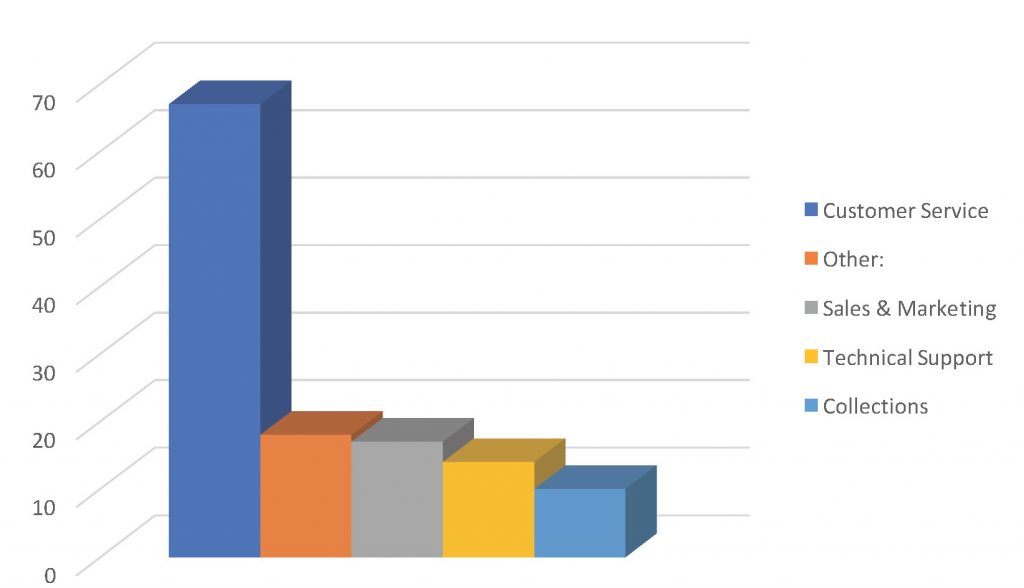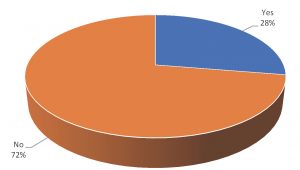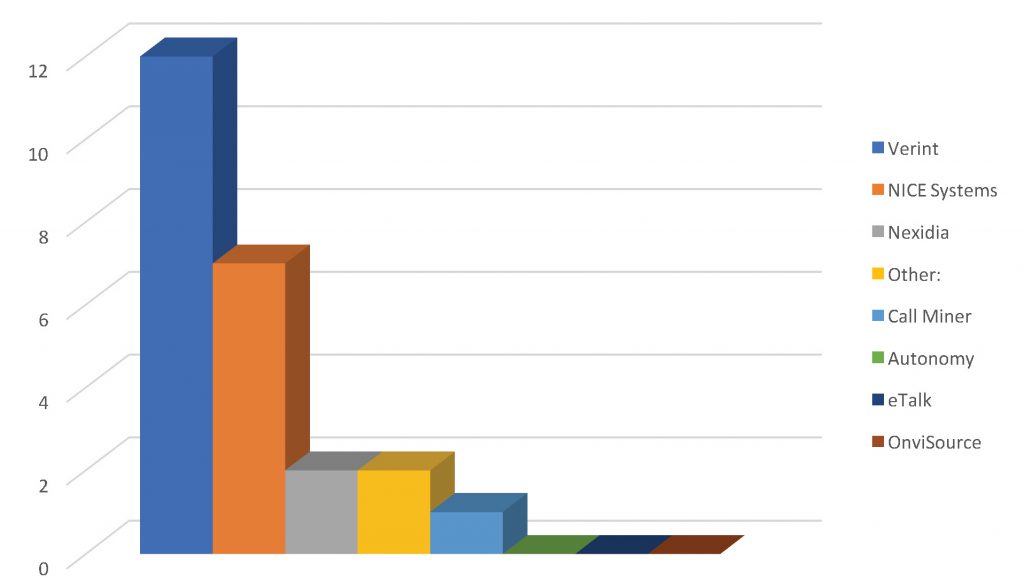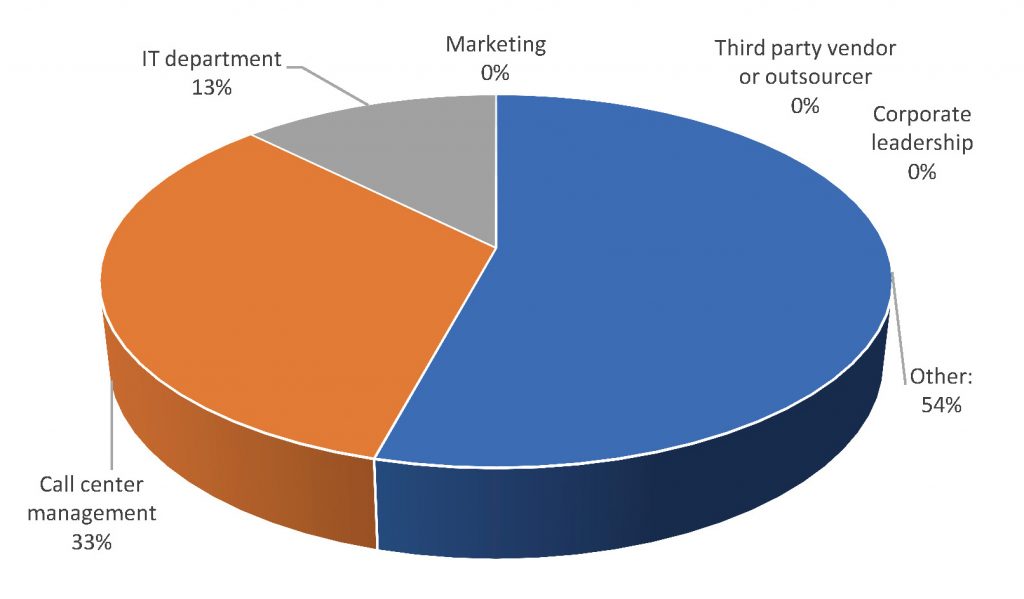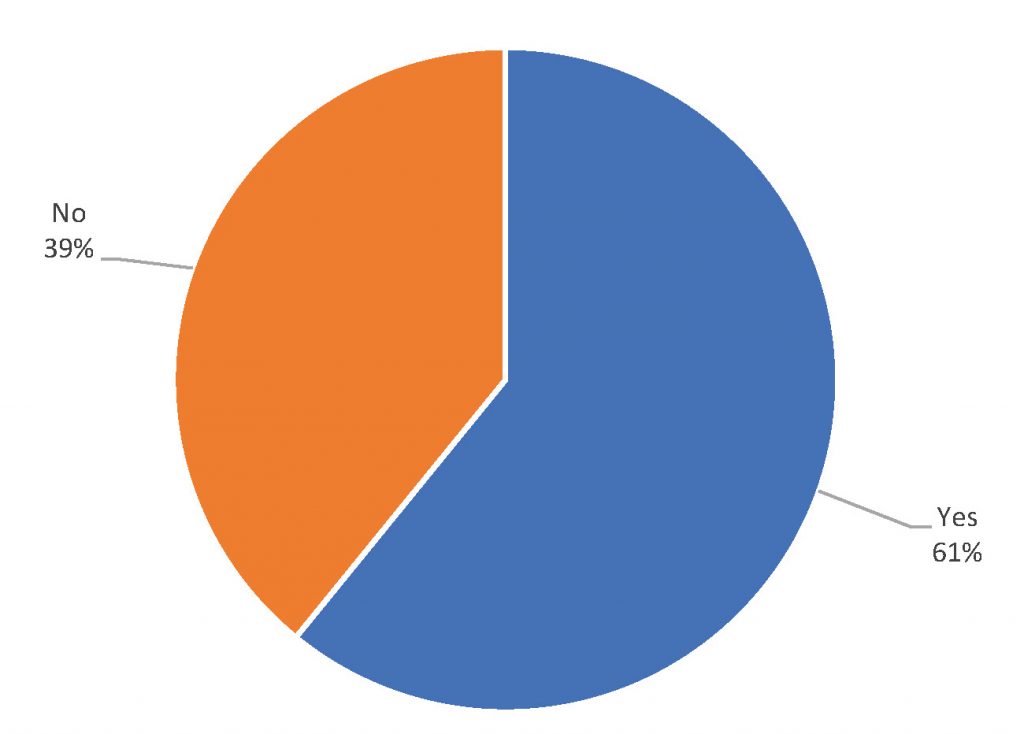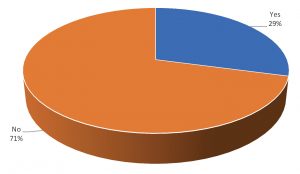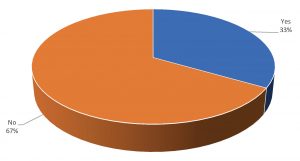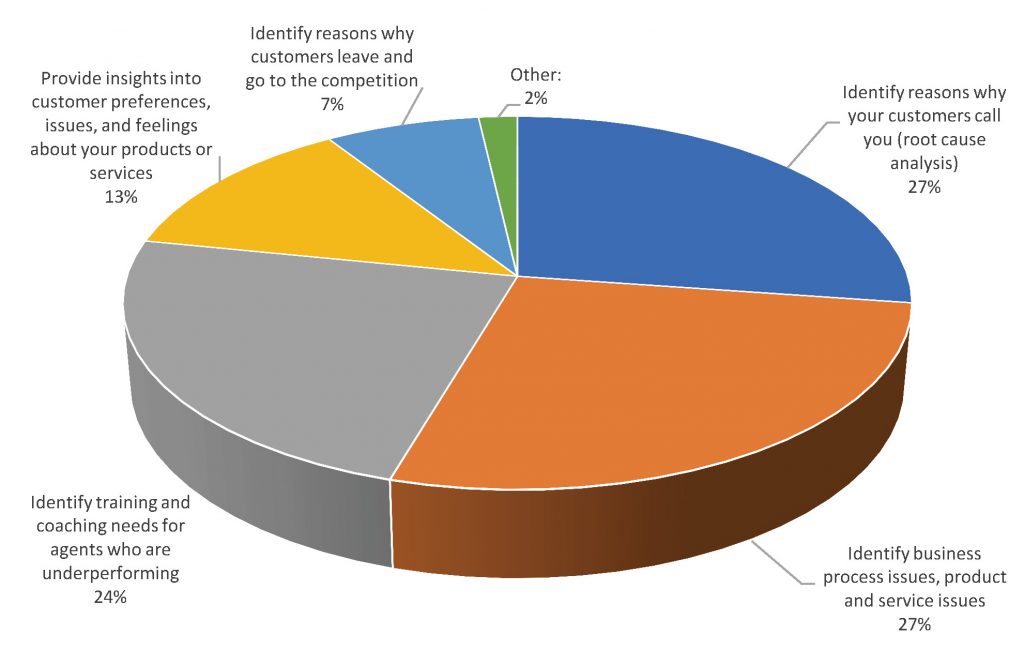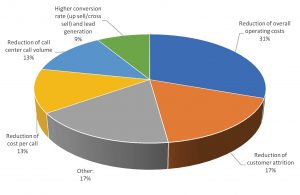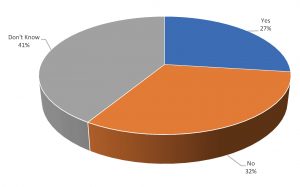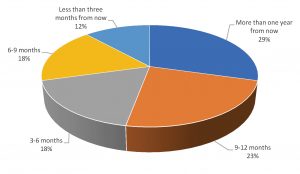[one_half]This article details the results of the most recent QATC quarterly survey on critical quality assurance and training topics. Nearly 90 contact center professionals representing a wide variety of industries provided insight regarding their utilization of speech analytics in the call center.
The largest number of participants is from call center operations with over 500 agents closely followed by those between 50 and 100 agents. The majority of the respondents indicated that customer service is the primary nature of their business but all of the other options were selected by some portion of the centers. This mix of respondents provides a broad spectrum of call center sizes and industries.
Just over one-quarter of the respondents indicated that they do have a speech analytics system in place today. The rest are not using this technology. This number is up from 15% in the same survey done in 2010.
When asked what vendor provided the speech analytics technology, Verint and Nice were the most common answers. A few other vendors are mentioned as well, but each had only 1 or 2 customers in the respondents.
When asked which department within their organization manages the technology (including key words, definitions, and parameter alignments), more than half selected “other” rather than any of the departments offered in the list. One-third indicated that the work is done within the call center with only 13% indicating it is done in the IT group. None of the respondents selected Marketing, Corporate Leadership, an Outsourcer, or a Third-Party Vendor. In 2010, 66% said Call Center Management oversaw speech analytics.
Survey participants were asked if they utilize emotion detection (measure stress level, dissatisfaction) with their speech analytics tools. The responses were fairly evenly split with 46% currently using this capability. This capability is useful in detecting customers who are particularly upset and may be at risk of defection.
When asked if they utilize talk analysis (silence, hold, talking over) with the speech analytics tool, just over 60 percent indicate that they do use this feature. This can help to identify challenges that the agent is facing when handling the call such as talking over the caller, long pauses (perhaps hunting for information), etc.
Some centers utilize the technology to determine if the agents are following the prescribed scripts. This can be important when compliance is a legal or contractional requirement. However, only 29 percent of those using the technology are utilizing it for this purpose.
When asked if there is any comparison of the results from customer surveys and speech analytics data, one-third indicated that they do make this comparison. Correlating these two forms of data can provide interesting insights into customer expectations and desires vs. the results being provided in the center. This number is down from 53% in 2010.
[/one_half]
[one_half_last]
Respondents were asked to identify the area in which the technology provided the greatest insight. Identification of why customers call and identification of business process issues each gained just over one-quarter of the responses. Identification of under-performing agents was close behind. Additional insights about customers including preferences, feelings about products, and reasons they might go to the competition were selected by fewer of the centers using this technology. In 2010, identifying training and coaching needs was the most popular answer.
Those centers utilizing the technology were asked to identify the greatest area of return on their investment. Many of the answers are directly related to economics, with 31 percent citing reduction in overall cost, 13 percent choosing reduction of cost per call, and 13 percent selecting reduction in call volume. Increased revenue was cited by 9 percent and 17 percent indicated reduction of customer attrition was the greatest benefit. As with any new technology implementation, it is important to do careful “before/after” studies to determine how the technology has changed the results. Being able to cite specific benefits and return on investment on one project will generally ease the process of getting the next project approved. Reduction of call center call volume was the most popular response in 2010.
Those respondents who are not utilizing the technology were asked to indicate if they were planning to purchase it in the future. Just over one-quarter indicated that they are planning to add it but the remainder either don’t know or do not have any plans to purchase. In 2010, only 18% had plans to purchase the technology.
For those planning the acquisition, the time frames to that purchase were explored. Just over two-thirds indicated that they are planning the purchase in the next year or so.
Those who do not plan to add the technology were asked to provide reasons and the most common are cited below:
- Our call center is too small for this to be a feasible investment.
- The software that has already been purchased does not operate effectively.
- We are a Service Bureau and utilize our client’s speech analytics software.
- Budget restraints.
- Not an applicable need for it at this point.
- Expensive and lacks the human element. Our current focus is on tone and delivery rather than exact verbiage.
- The nature of the language and terminology used by our customers makes it difficult for a Speech Analytics program to be successful. This is based off of feedback from another retirement system that has the Speech
- Analytics module for the same monitoring system that we have.
- We basically have yet to see where the benefit would be worth the additional cost.
- Too many variables/scenarios in a 9-1-1 call center requiring accurate information from diverse caller base.
- We aren’t planning to purchase that in the upcoming 2018 budget cycle, but perhaps in the future.
- We haven’t been sold on a good use for it yet. We wouldn’t want to use it as a part of IVR, but might consider it for quality monitoring.
This survey provides insight into the deployment and utilization of speech analytics technology. This product is in its early adoption with many centers taking a “wait and see” position. It is clear that most of those who have adopted it have found some significant benefits. However, the return on the investment opportunity is not clear to many others and they are delaying acquisition until that ROI expectation is more significant. It is often a cross-functional tool that can be beneficial to marketing, senior management, product development, and others as well as the call center, therefore requiring a more complex decision process and management plan than many of the other technologies that serve call center operations. [/one_half_last]

